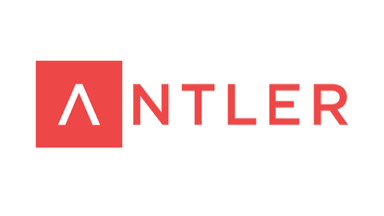Friday
A team experience platform empowering leaders to boost engagement.
The platform offers out-of-the-box engagement with a touchpoint plan and a library of tools and virtual activities, while eliminating the administrative burden.

My role
Being part of the Antler venture capital programme for early stage startups, I focused mainly on getting the project ready for pitching to investors. This included everything from customer discovery, wire framing the MVP, business model design and setting the go-to-market strategy.
Product
The mockup visualises the main dashboard of the platform in a single frame.
I conducted several customer interviews to really understand the core problem of the team leader, before adding the features absolutely necessary to solve their problems in version 1.
I then looked to competitors’ solutions and the design of other communication platforms. (As you can see, I was heavily inspired by Slack).
Mantra: “Innovate the core and copy the rest.“
Evolution (origin story)
The original concept behind Friday was a pivot on the B2B model, I designed for remodely. I realised that the underlying problem I was trying to solve was that of engagement at work.
In fact, USD 1 trillion is lost annually due to voluntary turnover in companies today. The NUMBER ONE reason why people leave their job is due to lack of engagement and personal growth. According to Gallup, 85% of the global workforce feels either not engaged or actively disengaged at work. The team leader holds the key, as 61% of exits say their manager could have done something to prevent them from leaving their job.
Yet, we don’t empower our leaders sufficiently. We typically promote an inexperienced performer to middle manager with a learning-by-doing approach to team engagement. We overload them with engagement survey data without guidance on how to respond (anyone who has worked in corporate, will recognise the panic around the annual or bi-annual survey and the desperate attempts to create a sense of follow-up by management). Ultimately, we measure them on individual contribution, which means that their time with the team is often limited to admin.
The idea behind Friday was to empower the leaders to unlock the full potential of their team. With out-of-the-box engagement we could provide the middle manager with the ammunition required to tackle the demands and requests of their team for engagement and personal growth. Helping them turn survey insights into action, defining a course of action and embedding this in a structured plan that would make every touchpoint with the team count - without adding to the already insurmountable administrative burden on their shoulders.
The business model and go-to-market strategy was inspired by Slack, applying a flexible B2C2B subscription model and product-driven approach to sales and marketing.
The market for employee experience platforms is estimated at USD 300+ billions and expected to grow 5% annually towards 2026.
Special thanks to…
Milestones
From idea to pitch-ready in 5 weeks.
MVP piloted through 3 virtual offsites with teams up to 10 participants each.
41 Corporate Middle Managers interviewed about team engagement.
4 CTO interviews conducted and 1 candidate selected.
Key takeaways
Being part of the Antler VC programme was an amazing opportunity for me, and I wish I had joined straight after leaving my corporate job to become an entrepreneur. The cohort consisted of roughly 100 founders with a wide variety of talents and backgrounds, while Antler facilitated mentoring from their inhouse and external advisory network - all extremely helpful. Additionally, having a clear structure with 3 phases and 12 weeks to complete the programme, really pushed me to prioritise, pivot and accelerate quickly through multiple iterations of the project.
Below some dos and don’ts, if you plan to join a VC accelerator programme.
Dos:
If you come into the programme with an idea, go all-in with it. Create excitement around it to attract others, cause if you don’t, they’ll try to sell you their idea (which is fine, if it’s better than yours - but there is a risk that you’ll find yourself down the road not really feeling passionate about the problem, you are trying to solve).
Be mindful of the space in which the VC is keen to invest. Antler opened an office in Copenhagen, due to its position as an innovation hub for cleantech and sustainability. Pursuing an idea within this space, would have significantly improved my chances of getting the investment.
Have a direct, achievable goal from the beginning, e.g. 10 customers, 5k revenue, etc. and then prove that you can execute the plan.
Demonstrate how you intend to spend the investors’ money. It should be possible to implement your idea within the budget of that initial investment - with the ambition, of course, to build a scalable tech business with a scalable team.
Don’ts:
Avoid red oceans! Even if the market you are addressing is huge and in growth, you must evaluate competition. In my case, I was basically going head-to-head with a unicorn, which eventually made it a hard sell to investors.
No need to stress out about the set timeline. First of all, you need to identify a problem that you are willing to spend the next 10 years to solve, and ideally find a co-founder that you enjoy working with for just as long. And secondly, Antler invests in great teams with promising ideas, so if you show up after the programme, and you have both, I bet that they’ll invite you to pitch your idea ;)








